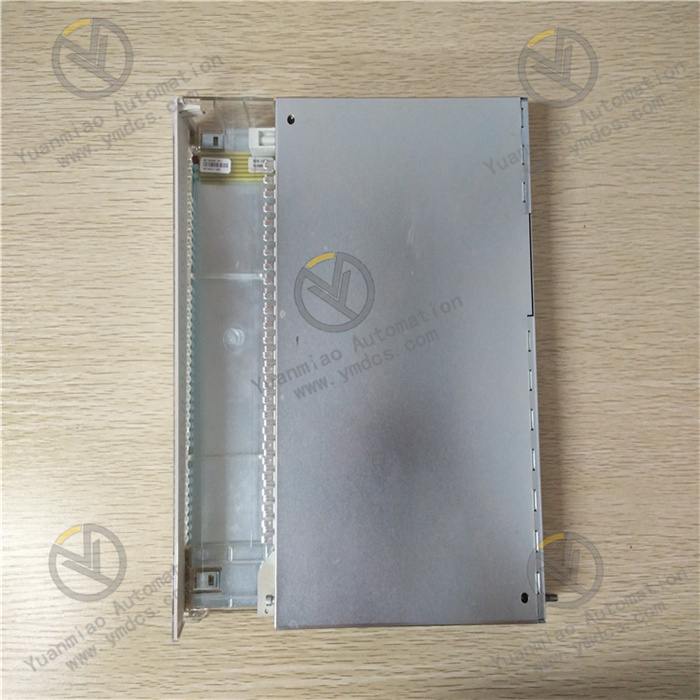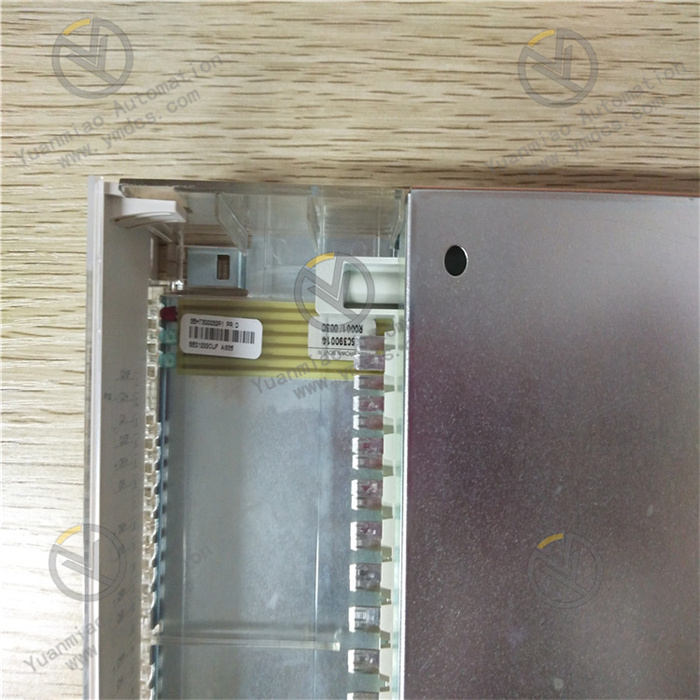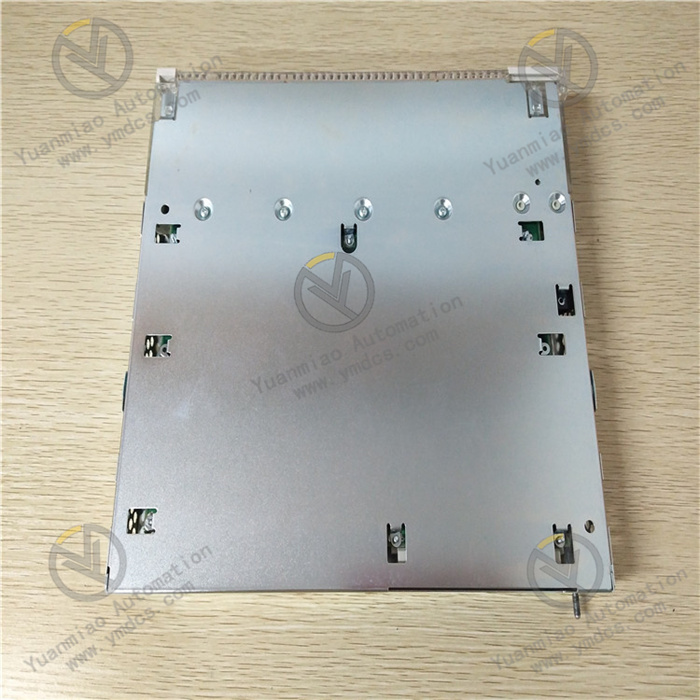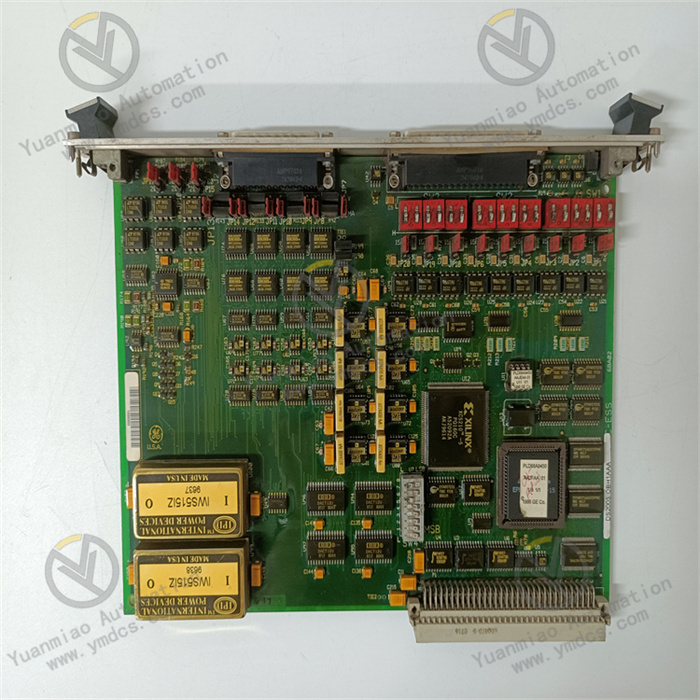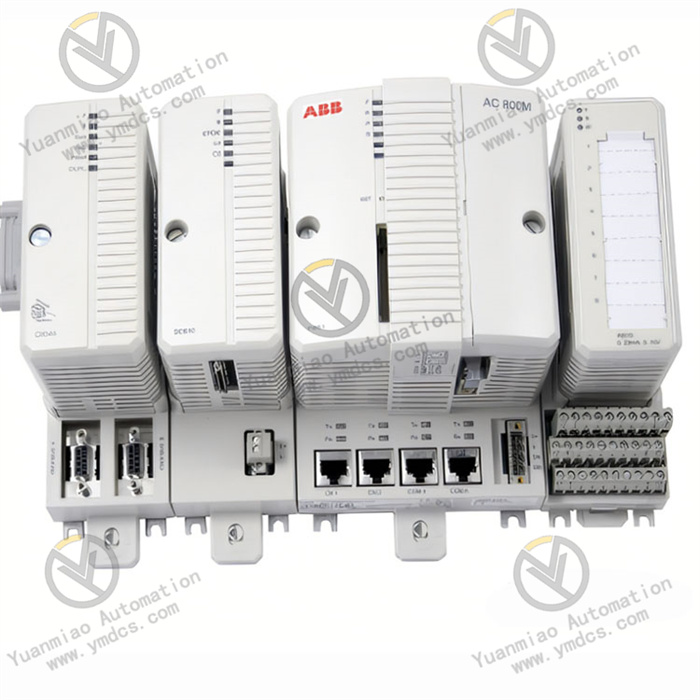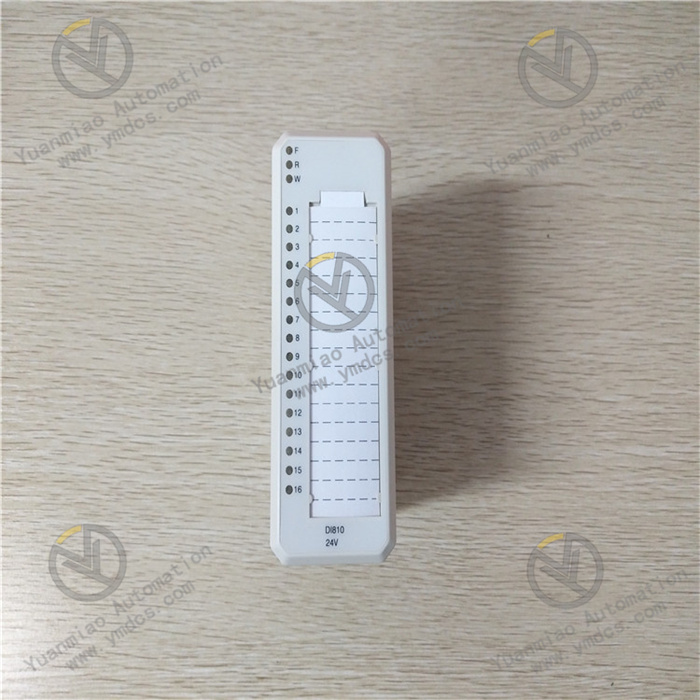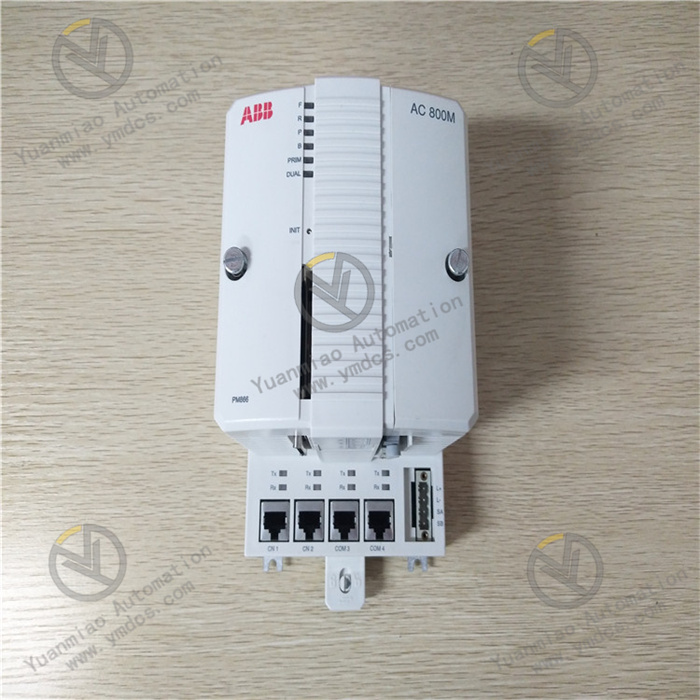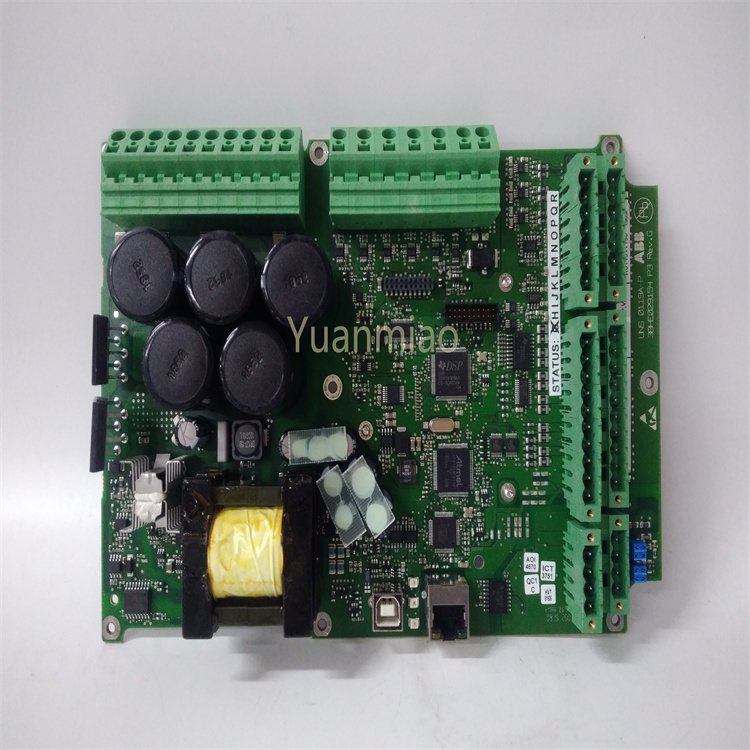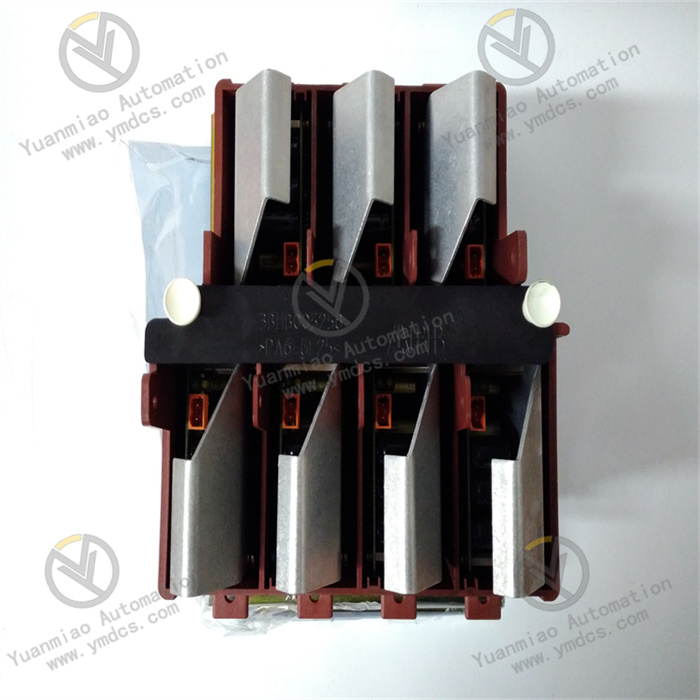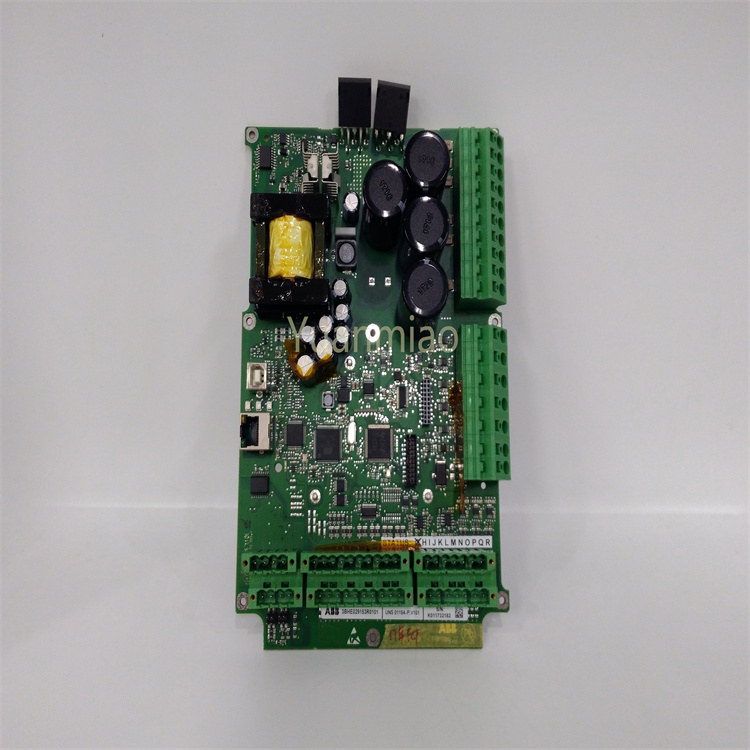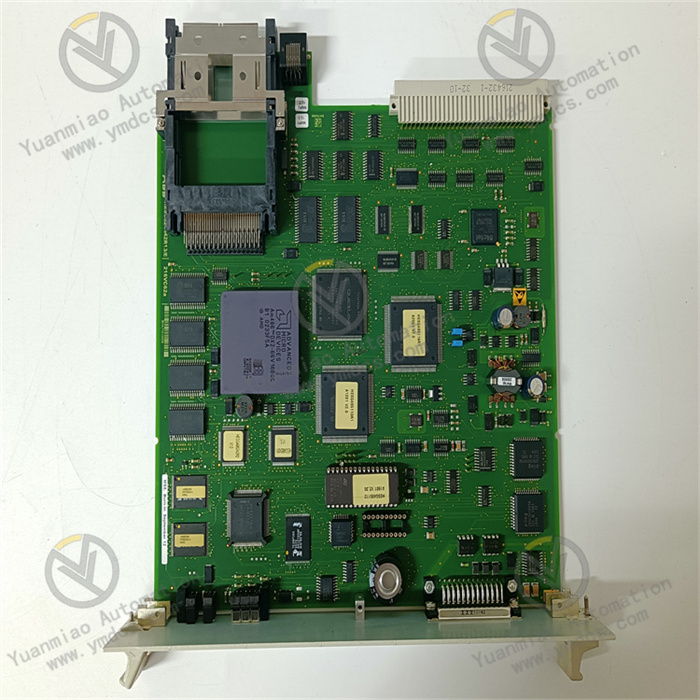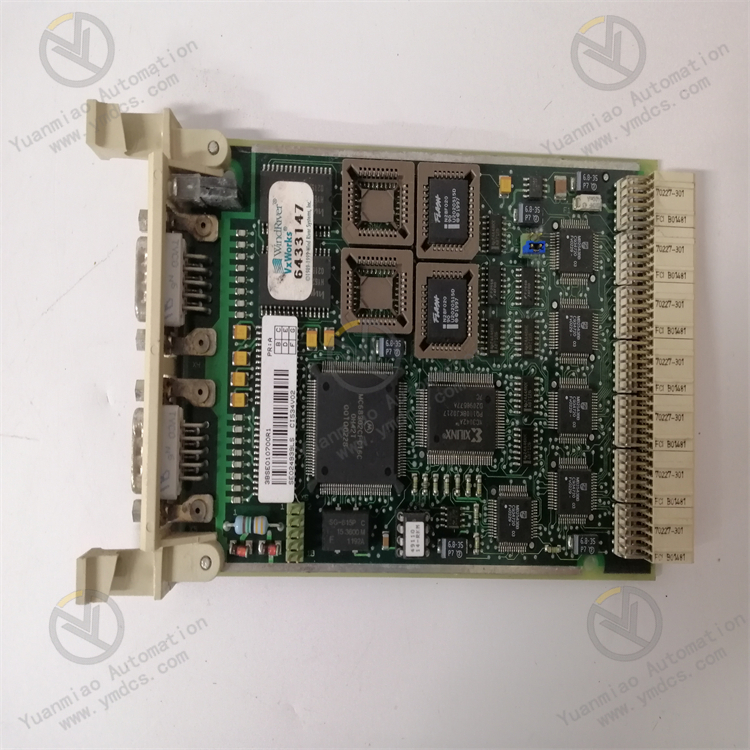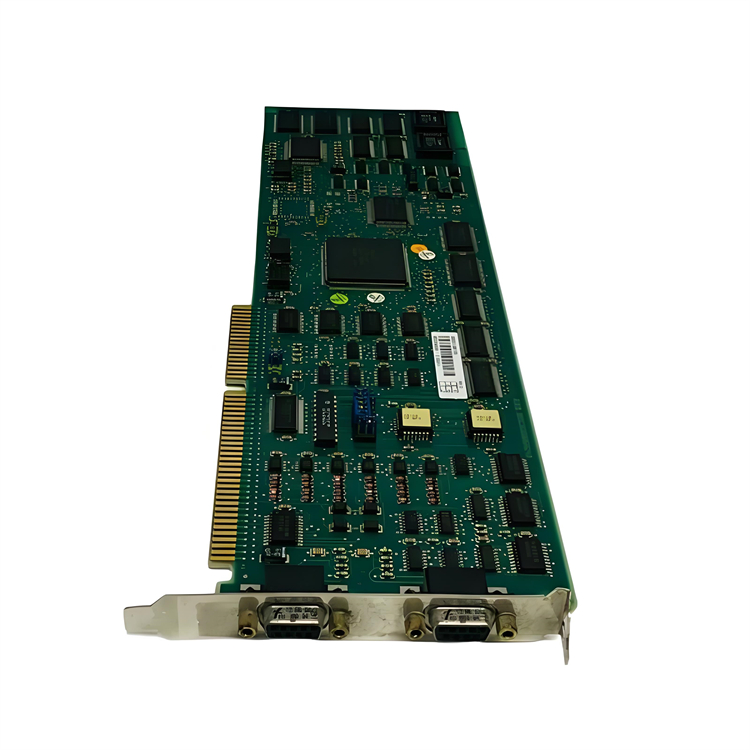Description
ABB CI627 3BSE009799R1
ABB CI627 3BSE009799R1
Overview
The ABB CI627 3BSE009799R1 is a high-performance industrial communication interface module specifically designed for ABB's AC 800M control system. It primarily enables high-speed data interaction between field devices and the control system. Supporting multiple industrial communication protocols, this module features high reliability and anti-interference capability, making it suitable for industrial scenarios with strict real-time and stability requirements, such as power, petrochemical, and metallurgy industries.
Functional Features
- Multi-Protocol Compatibility
Supports Profibus DP/V1 protocol, enabling seamless communication with third-party Profibus devices (e.g., sensors, actuators, distributed I/O stations) to achieve cross-vendor device integration and control. - High-Speed Real-Time Communication
Supports data transmission rates of up to 12Mbps, meeting fast-response control needs and ensuring real-time interaction of commands and feedback information. - Redundancy and Hot-Swap Design
Supports module hot-swapping and redundant configuration (e.g., dual-module backup), allowing module replacement without interrupting system operation, reducing downtime, and enhancing system reliability. - Strong Anti-Interference Capability
Adopts electrical isolation technology (isolation voltage ≥500V AC) and industrial-grade protection design, ensuring stable operation in harsh environments with electromagnetic interference, vibration, etc. - Flexible Configuration and Diagnosis
Enables customization of communication parameters (e.g., baud rate, slave address, data transmission format) via ABB Control Builder software, and supports real-time fault diagnosis and status monitoring.
Technical Parameters
| Parameter Type | Specific Indicators |
|---|---|
| Communication Protocol | Profibus DP/V1 (master/slave mode) |
| Communication Interface | 2 Profibus interfaces (DB9 connectors), supporting half-duplex communication |
| Baud Rate Range | 9.6kbps to 12Mbps (auto-adaptive or manually configurable) |
| Electrical Isolation | Isolation voltage between channels ≥500V AC, preventing interference and overvoltage damage |
| Operating Voltage | 24VDC (±10%), power consumption approx. 8W |
| Protection Class | IP20 (suitable for installation in control cabinets) |
| Ambient Temperature | Operating: -20℃ to +60℃; Storage: -40℃ to +85℃ |
| Dimensions (L×W×H) | Approx. 170mm×40mm×200mm (fits standard control cabinet installation) |
| Certifications | International standards: CE, UL, ATEX (suitable for explosion-proof areas), etc. |
Working Principle
When acting as a Profibus master, the CI627 module sends polling commands (e.g., reading sensor data or writing control parameters) to slave devices via the RS-485 physical interface. Commands are encapsulated in Profibus protocol frames (including address, function code, data checksum, etc.). After receiving slave responses, the module first performs electrical isolation and signal filtering, then parses the protocol content through an internal processor, converting data into digital signals recognizable by the control system. When acting as a slave, the module receives master commands and executes corresponding actions (e.g., outputting control signals). Its redundancy design ensures that if the master module fails, the backup module automatically takes over communication to maintain continuous system operation.
Common Faults and Solutions
- Communication Failure
- Possible causes: Damaged cable, poor interface contact, incorrect baud rate/slave address configuration.
- Solutions: Check if Profibus cable is shielded and grounded; replace damaged cable; use a multimeter to test interface voltage; confirm parameters match slave devices via Control Builder.
- Abnormal Data Transmission
- Possible causes: Electromagnetic interference, protocol frame checksum error, module hardware failure.
- Solutions: Add shielding to the cable and ground it at a single point; check slave device protocol compatibility; read error codes via diagnostic software (e.g., System 800xA) and replace the module if hardware failure occurs.
- Redundancy Switching Failure
- Possible causes: Redundancy cable not connected or misconfigured; master module failure not triggering switching.
- Solutions: Ensure communication cable between redundant modules is properly connected; reconfigure redundancy parameters in software; manually power off the master module to observe if the backup module activates automatically.
- Module Overheating
- Possible causes: Poor control cabinet heat dissipation, ambient temperature exceeding the rated range.
- Solutions: Check fan operation and add cooling devices; ensure module installation spacing complies with specifications (≥20mm) to avoid dense stacking.
Application Scenarios
- Process Automation Control
Connects Profibus-compatible flowmeters, pressure transmitters, valve positioners, etc., transmitting field data to the DCS system for closed-loop control. - Distributed Device Integration
Connects multiple distributed I/O stations (e.g., ABB DI630, DO630) via Profibus network in large production lines, simplifying wiring and enhancing system expandability. - Motor and Drive Control
Communicates with frequency converters (e.g., ABB ACS880) to adjust motor speed, torque, etc., in scenarios like metallurgical rolling mills and conveyor systems. - Power System Monitoring
Connects relay protection devices, smart meters, etc., in substations to achieve power parameter collection and remote control.


